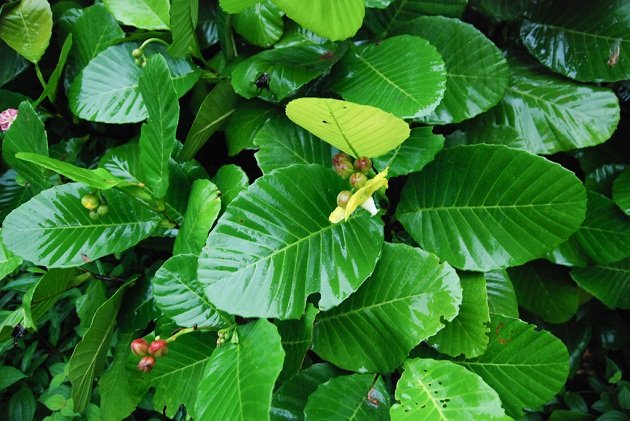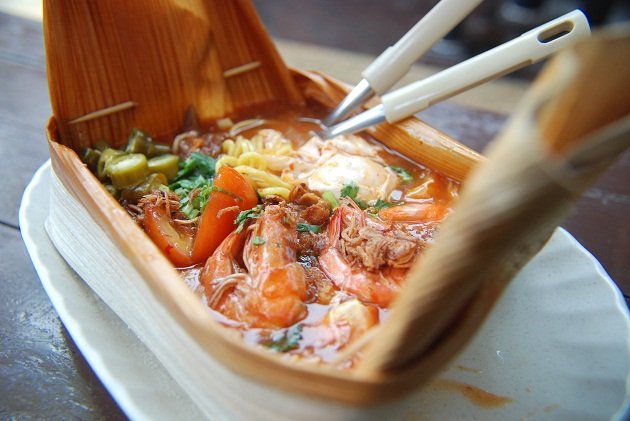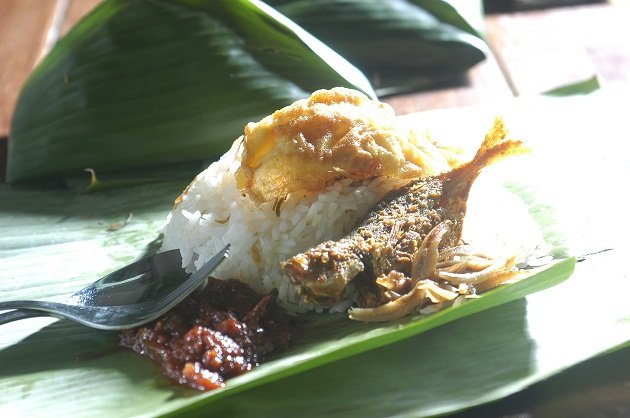
Should It Leaf or Should It Stay?
By Joanna Yeo - Tuesday, Sep 11, 2012
Long before plastic bags and containers became a ubiquitous form of food packaging for takeaways, wrapping cooked food with leaves like Opei and banana used to be the norm during Singapore’s kampung days.
With much effort being placed towards a greener movement in food packaging through the introduction and promotion of eco-friendly and ‘greener’ food boxes made out of materials such as corn plastic and renewable fibre, why don’t we simply go back to the simplest, most natural and greenest form of food packaging – leaves?
Using leaves to package food is more environmentally friendly than its plastic counterparts. Mr Jose Raymond, Executive Director of Singapore Environment council says, “Leaves are considered compostable, which is even better than being biodegradable. When they break down, they return nutrients to the soil.‘’ On the other hand, he adds, plastic containers and packaging made from petroleum by-products will not decompose within our lifetime.
In fact, Mr Jose is supportive of the use of leaves in food packaging as they are renewable resources. Banana trees, coconut trees and betel nut palms are not endangered and are relatively fast-growing. Therefore, leaf packaging for food is more sustainable in the long run.
Even if it is environmentally friendly, the most concerning question on everyone’s mind is whether eating food off leaf is actually safe? The Agri-Food & Veterinary Authority of Singapore (AVA) says that they routinely monitor and sample leaves for wrapping food. Test results have shown that leaves are safe to be used for wrapping food.
It is clear that leaf packaging is eco-friendly, safe for food wrapping and a great natural flavour enhancer. However, due to dwindling supply from mainland Singapore as a result of urbanisation and clearance of trees and plantations, hawkers who would like continue with the use of leaves for wrapping their food have to fork additional cost.
“Opei leaves are more expensive than plastic containers,” says Mr Tony Chiu, boss of New Hawa Restaurant. For a two-persons’ share meal, the Opei leaf that is being used to wrap food costs 50 cents, which is twice the price of the plastic container that costs 25 cents. He adds that leaves cost more as they have to be imported from countries like Malaysia and Indonesia – one of the reasons why some hawkers are reluctant to switch from plastics back to leaves.
The benefits of using leaf to package food seems to outweigh that of the plastic containers, yet the extra cost is what’s stopping hawkers from using them. Will you be willing to pay extra for your food to be wrapped with leaf?
Leaf food packaging over the years
Simpoh Air leaves: Simpoh Air, also known as ‘CB leaves’, was once popularly used to pack food like tempeh (deep-fried fermented soya beans) and rojak. Mr. Goh Tiaw Hiong, head cook at Huat Huat BBQ Chicken Wing, explains that Simpoh Air, like all leave types, make a good packaging material as it is waterproof, hence gravy and oil will not seep through. However, it does not enhance the flavour of the food like banana leaves.

Opei leaves: The leaves come from betel nut palm. “Back in the past, the Malays and Chinese use Opei leaves to pack almost every kind of food from satay to fried food like mee goreng, Hokkien mee and even soupy food like mee kuah,” says Sam, owner of three Malay food stalls at Makansutra Guttons Bay.

In recent years, opei leaf is making a comeback in some fried Hokkien mee and char kuay teow stalls, where ready-cooked food is served on a small nicely trimmed opei leaf for customers that are eating in. However, Sam adds that this way of using Opei leaves is merely for food presentation. In order to truly benefit from the use of Opei leaves, food should be wrapped up with the leaves and kept inside for a while to allow the leaf to work its magic. The longer the food is wrapped up, the more fragrant it will be.
Banana leaves: This is perhaps one of most widely used leaf type to date that has sustained through generations despite the emergence of plastic containers and microwaveable boxes. One of the local dishes that is frequently associated with banana leaves is nasi lemak. Kelly Goh, one of the shareholders of Chong Pang Nasi Lemak, says that banana leaves give an extra fragrance to the coconut rice and side dishes. Besides that, the use of banana leaves has been a tradition that is passed down to her by her Nonya mother and they intend to continue this practice. However, due to extra costs for using banana leaves, they are charging an extra 10 cents for the leaf packaging.

The tradition of wrapping food with leaves is not only exclusive to the Chinese, Malays and Indians. It is also widely used in other parts of Asia like Thailand, the Philippines and India for familiar dishes like nasi briyani and pandan leaf chicken.


